Every year, researchers from a variety of disciplines, supported by Labex ITTEM, take a fresh look at territorial and environmental issues specific to mountain areas. They are published by various publishers.
List of published works :
[su_tooltip title=”The recreational mountain. A transition in progress.” text= “Since the end of the 19th century, the mountains have been the scene of numerous recreational activities that have contributed to profound changes in mountain culture, economy and landscape. How are these practices being challenged by global warming, declining biodiversity and the technological runaway of the contemporary world? How can they contribute to societal transition by proposing an alternative mode of development for mountain territories? The author questions the recreational dynamics at work, and observes their developments and evolutions.” position=”top ” background=”#207c7c” color=”#ffffff” font_size=”14″ max_width=”600″] [/su_tooltip]
[/su_tooltip]
The recreational mountain. A transition along the way.
By Jean Corneloup, Collection Montagne et Innovation, éditions PUG/UGA, January 2023.
[su_tooltip title=”Mountains in question(s). Issues and controversies from the perspective of the Alps.” text= “In contrast to the conventional image of “eternal mountains”, this book looks at mountains in all their diversity, contradictions and mutations. In 23 words, 19 specialists from different disciplines in the human and social sciences, renowned for their work on the mountains, describe the changes and challenges they face. From “battles” to “divine”, from “gender” to “wild”, the entries are critical, alert, playful and short. The writing avoids scholarly references, making for fluid, enjoyable reading. The Alps are the privileged terrain, while opening up a wider debate on the idea of the mountain and its social construction. Between climatic vulnerability, conflicting interests, the power of symbols and the social values of the environment, the cards are reshuffled, the game appears complex and uncertain but far from losing.” background=”#207c7c ” color=”#ffffff” font_size=”14″ max_width=”600″]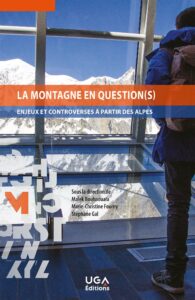 [/su_tooltip]
[/su_tooltip]
The mountain in question(s). Issues and controversies from the Alps.
Edited by Malek Bouhaouala, Marie-Christine Fourny and Stéphane Gal, Collection Carrefour des idées, UGA Éditions, 2023.
[su_tooltip title=”The Productive Alps. Renewing Alpine industry to rethink the massif’s future.” text= “The Alps form a mosaic of places and uses, creating a complex territory. Tourism, the dominant figure in the representation of economic development, has not been and cannot be the only possible way forward. The book examines the possibilities for the emergence and forms of neo-industrialization, capable of opening up new horizons for the region. Contributions from architects, urban planners, geographers and economists place the analysis within a territorial approach questioning the relationship to globalization, local specificities, the role and potential of infrastructures, links with metropolized areas, and the organization of industrial spaces. ” background=”#207c7c” color=”#ffffff” font_size=”14″ max_width=”600″]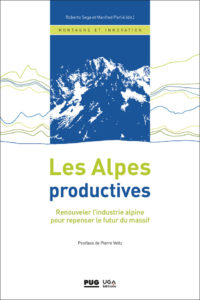 [/su_tooltip]
[/su_tooltip]
The Productive Alps. Renewing Alpine industry to rethink the future of the massif.
Edited by Roberto Sega and Manfred Perlik, Collection Montagne et Innovation, éditions PUG/UGA, November 2022.
[su_tooltip title=”Settling and living in the high Alpine valleys. Life trajectories, attractiveness and adaptability of these areas” text= “French rural areas, particularly in the mountains, have been enjoying a revival in attractiveness in recent decades. Between collective aspirations and individual representations, the author examines the lifestyle choices of the inhabitants of France’s high alpine valleys. She compares them with the public policies implemented to attract and retain people, and with the territorial development and reshaping of these areas under the influence of tourism. Based on numerous interviews, the book looks at issues of access to public services, shops, housing, employment, mobility, local life and more. And to the ability of local players to adapt in order to energize these year-round living spaces.” background=”#207c7c ” color=”#ffffff” font_size=”14″ max_width=”600″]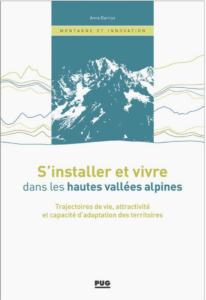 [/su_tooltip]
[/su_tooltip]
Moving to and living in the high Alpine valleys. Life trajectories, attractiveness and adaptability.
By Anne Barrioz, Collection Montagne et Innovation, éditions PUG, November 2022.
[su_tooltip title=”Sociologie des conseils scientifiques. A scientific millefeuille to protect nature.” text= “In the face of growing uncertainty, public action, and particularly environmental policies, rely on the massive mobilization of scientists. They are enlisted to draw up national expert reports, but also to respond to problems on a global scale.
local. With the development of environmental policies since the 1960s, scientific councils have sprung up across the country. Their abundance – a French speciality – makes them an ideal place to study the evolving relationship between nature, science and society. Until now, however, they have been little-known. This book offers a sociology of scientific councils, describing how they operate, how they are organized and what their missions are, in order to situate them in the field of expertise and better understand their actual role in the governance of nature. In order to grasp its fundamentally territorial aspect, the survey takes us to the Alps, to the heart of three park and nature reserve councils (Ecrins, Vercors and Haute-Savoie), to plunge into the bureaucratic and professional world of nature management. Extremely concrete problems linked to planning or concertation between activities, the management of species, whether hunted or protected, or the preservation of heritage are on the agenda. The twenty or so members of a council compare their disciplinary traditions, ethics and representations to inform action and negotiate ways of protecting biodiversity. The survey depicts the ambiguous roles and positions of these opinions, which provide managers with scientifically-based arguments for accepting, rejecting or modifying developments. The involvement of these scientists in public action thus diverges from both classic expertise and activism, and illustrates other relationships to politics, admittedly more discreet, but based on relationships to people and places.” background=”#207c7c” color=”#ffffff” font_size=”14″ max_width=”600″]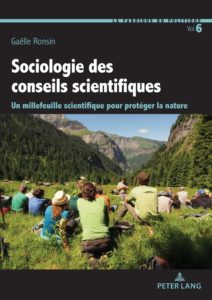 [/su_tooltip]
[/su_tooltip]
Sociology of scientific councils. A scientific millefeuille to protect nature.
Gaëlle Ronsin, Collection La fabrique du politique, Vol.6, Éditions Peter Lang, 2022.
[su_tooltip title=”Le ski de randonnée brouille les pistes.” text= “The ancestor of all snow sports, ski touring is undergoing a major transformation, and in recent years has enjoyed a resurgence of interest in a variety of forms: from long-distance trekking to downhill “free rando”, from slope-side climbing to ski mountaineering, soon to be an Olympic sport. Some of these practices remain very discreet, while others are more visible. Although they sometimes run counter to traditional visions of the sport, they are part of its evolution and raise many questions. Who are the newcomers and how do they practice? What is their relationship with nature? To risk? What cultural changes are at work?” background=”#207c7c ” color=”#ffffff ” font_size=”14″ max_width=”600″]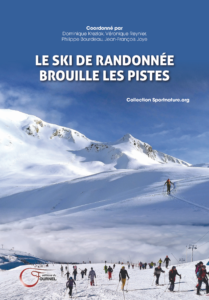 [/su_tooltip]
[/su_tooltip]
Ski touring blurs the lines.
Coordinated by Dominique Kreziak, Véronique Reynier, Philippe Bourdeau, Jean-François Joye, Collection Sportnature.org, éditions du Fournel, October 2022.
[su_tooltip title=”Communals in the 21st century. A collective property between history and modernity.” text= “Despite a certain decline, communaux, as a form of collective property, still count. Their persistence is astonishing. This observation also represents an opportunity: it argues in favor of redefining their functions, on their own scale, in order to help (re)align the social function of property with major environmental, climatic and social issues. At the crossroads of a number of social issues, this book fuels the process of reflection needed to redefine a living environment that reconciles progress, social justice and environmental preservation. Based on multidisciplinary research (including law, geography, history and anthropology), it first looks at the “trajectory” of communal land use: between resistance and mutation. Secondly, with a more forward-looking focus, it deals with the changing perceptions of which they are the object, and questions their possible evolution from anachronism to the vanguard of the resolution of certain territorial and environmental problems.” background=”#207c7c” color=”#ffffff” font_size=”14″ max_width=”600″]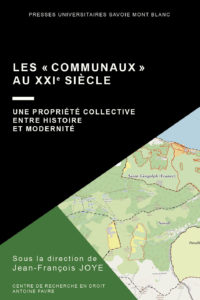 [/su_tooltip]
[/su_tooltip]
Communes” in the 21st century. A collective property between history and modernity.
Edited by Jean-François Joye, Centre de recherche en droit Antoine Favre, Presses universitaires Savoie Mont Blanc, 2021.
[su_tooltip title=”Knights in the mountains. Corps en armes et corps en marche 1515 – 2019.” text= “1515: Marignan! The easiest date in history to remember! But who knows that before the famous battle, François I and his cannons had crossed the Alps by unknown routes? And that the king and his warriors were wearing battle armor at an altitude of 2,000 m?
In 2019, scientists and enthusiasts have decided to repeat the feat. Not out of sheer performance, but in order to measure the effects on the body and thus better understand the conditions under which Renaissance armies crossed the mountains. To achieve this, armor had to be made, put on and tested, both in the field and in the laboratory, using cutting-edge technologies. By bringing together disciplines such as history, biomechanics, computer science and physiology, as well as sportsmen, associations and mountain troops, the MarchAlp project turned the armed body into a source of information, the mountains into a laboratory, and a scientific adventure into a human one.” background=”#207c7c” color=”#ffffff” font_size=”14″ max_width=”600″] [/su_tooltip]
[/su_tooltip]
Knights in the mountains. Bodies in arms and bodies on the march 1515 – 2019.
Edited by Stéphane Gal, Collection Carrefours des idées, UGA Éditions, 2021.
[su_tooltip title= “Winter sports resorts’ strategies to adapt to climate change. General trends and local responses.” text= “How do global changes influence the trajectory of winter sports resorts and their future? What local responses are made in different regions of the world according to historical contexts and specific resources? Based on an interdisciplinary reading of a vast repertoire of cases located in Europe, North America, Asia and Oceania, the book brings together a panel of international reference authors who present their latest work. Their contributions put into perspective many forms of adaptation to climate, economic, social and cultural transformations. This innovative approach, which combines environmental and societal issues, will be of interest to all observers and players in the winter sports sector. ” background=”#207c7c” color=”#ffffff” font_size=”14″ max_width=”600″]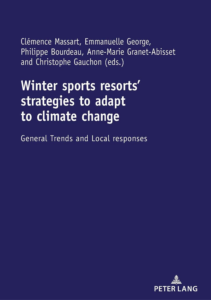 [/su_tooltip]
[/su_tooltip]
Winter sports resorts’ strategies to adapt to climate change. General trends and local responses.
Edited by C. Massart, E. George, P. Bourdeau, A-M. Granet-Abisset and C. Gauchon, Éditions Peter Lang, 2020.
[su_tooltip title= “Mountains in globalization. Diasporic networks and social mobilizations in the Atlas (Morocco), the Highlands (Scotland) and the French Alps. ” text= “In the context of globalization, mountains are at the heart of a paradox. Presented as regions “on the margins” weakened by forced opening-up, they also reveal themselves to be areas of social innovation. Drawing on a wide range of concrete examples from the mountains of Africa and Europe, this book deconstructs the idea that mountains are inevitably marginalized. It looks at how mountain people, through the valorization of heritage and identities, invent alternatives to dominant economic and political systems.” background=”#207c7c ” color=”#ffffff” font_size=”14″ max_width=”600″]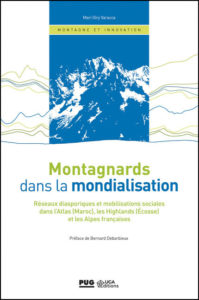 [/su_tooltip]
[/su_tooltip]
Montagnards in globalization. Diasporic networks and social mobilizations in the Atlas (Morocco), the Highlands (Scotland) and the French Alps.
By Mari Oiry Varacca, Collection Montagne et Innovation, éditions PUG/UGA, November 2019.
[su_tooltip title= “Mountains on the move. Territorial dynamics and social innovation.” text= “This book offers a social and cultural approach to innovation through the prism of the mountains, focusing on local actors. From the tratturi of the Alps to alternative experiments in Ariège, from the sherpas of Nepal to the collective lands of northern Vietnam, the authors highlight the power of social innovation in mountain territories. We discover new solutions to the crisis of the neo-liberal model, particularly on issues of cultural and ecological preservation.” background=”#207c7c” color=”#ffffff” font_size=”14″ max_width=”600″] [/su_tooltip]
[/su_tooltip]
Mountains on the move. Territorial dynamics and social innovation.
Edited by Marie-Christine Fourny, Collection Montagne et Innovation, éditions PUG/UGA, October 2018.
[su_tooltip title=”Mountains and liminality. Alpine manifestations between the 16th and 21st centuries” text= “Mysterious, vertical and constraining, the mountain has always been a place of passage – between wild and civilized worlds, human and divine spheres – requiring adaptation in order to be crossed. Using the anthropological concept of liminality, historians and geographers revisit notions of limits, circulation, conflict and identity. How does the in-between experience in the mountains generate innovation? What are the consequences on a human scale? The Val di Susa – from the barricades of 1629 to the anti-TGV struggle – occupies a central place in the work.” background=”#207c7c” color=”#ffffff” font_size=”14″ max_width=”600″]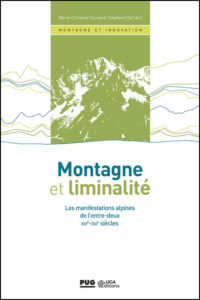 [/su_tooltip]
[/su_tooltip]
Mountains and liminality. Alpine events between the 16th and 21st centuries.
Edited by Marie-Christine Fourny and Stéphane Gal, Collection Montagne et Innovation, éditions PUG/UGA, September 2018.
[su_tooltip title=”Mountain leisure activities under Vichy. Law, institutions and politics.” text= “Like other authoritarian regimes of the time, Vichy used mountain leisure activities as a tool, promoting them as part of the French state’s plan for national recovery.
Combining the views of legal experts and historians, this book provides a comprehensive overview of this largely unknown sports policy. It seeks to measure the singularities of the national approach, as well as to distinguish between historical rupture and continuity.
In some respects, the Pétain regime continued the work of the Front Populaire. In other respects, it bequeathed to subsequent republics tools for mountain tourism development, some of which still exist today. At a time when the 1985 Mountain Law has just undergone a far-reaching reform, this book offers a reflection on the origins of mountain law in France.” background=”#207c7c ” color=”#ffffff” font_size=”14″ max_width=”600″]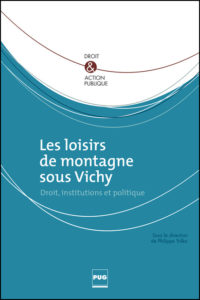 [/su_tooltip]
[/su_tooltip]
Mountain leisure activities under Vichy. Droit, institutions et politique, Collection Droit & action publique.
Edited by Philippe Yolka, Collection Montagne et Innovation, éditions PUG, October 2017.
[su_tooltip title=”A mountain of innovation. What dynamics for the outdoor sports sector?” text= “This book describes the processes of innovation in the mountains, the main driving force behind the growth of the outdoor sports market. The mountain sports sector is no exception:outdoor companies and the regions where outdoor sports are practiced are transformed, evaluated and even rewarded on this criterion. But innovation is not enough to succeed. Through the analysis of numerous examples of innovation, the book highlights the collective dimension and complexity of the innovative processes at play.” background=”#207c7c ” color=”#ffffff” font_size=”14″ max_width=”600″] [/su_tooltip]
[/su_tooltip]
A mountain of innovation. What are the dynamics of the outdoor sports sector ?
Edited by Bénédicte Vignal, Eric Boutroy and Véronique Reynier, Collection Montagne et Innovation, éditions PUG, September 2017.
[su_tooltip title=”Order, security and rescue in the mountains. Police and territory (XIXe-XXIe siècles).” text= “What do police forces, whether civilian or military, do in the mountains? Since the 18th century, their missions have shifted from safety (violence, smuggling, etc.) to security (risk prevention and rescue). The mountains, while putting their systems to the test, are a breeding ground for innovation in terms of professionalization and specialization. Tracing the course of history through archives, field interviews and with specialists from different disciplines, the book revisits the issues of mountain order, safety and rescue.” background=”#207c7c” color=”#ffffff” font_size=”14″ max_width=”600″] [/su_tooltip]
[/su_tooltip]
Order, safety and rescue in the mountains. Police and territory (XIXth-XXIst centuries).
Edited by Aurélien Lignereux, Collection Montagne et Innovation, éditions PUG, October 2016.
[su_tooltip title= “Remembering in the mountains. Guides, stones and squares in the Alps.” text= “Erected in the Alps on street corners, squares and cemeteries, numerous monuments shaped like summits commemorate a feat, a catastrophe or a life’s work. They make our memories visible, bearing witness to the ties that men and women have forged with the mountains over more than two centuries. For ten years, Emmanuelle Petit conducted a field survey, notably in Chamonix (Haute-Savoie) and Bessans (Haute-Maurienne), to pinpoint the evolution of these commemorative practices.” background=”#207c7c” color=”#ffffff” font_size=”14″ max_width=”600″]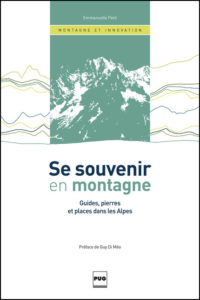 [/su_tooltip]
[/su_tooltip]
Remembering in the mountains. Guides, stones and places in the Alps.
By Emmanuelle Petit, Collection Montagne et Innovation, éditions PUG, October 2016.
[su_tooltip title=”ENSA conquers the summits. The mountains on the road to excellence.” text= “Ski instructors and mountain guides are emblematic characters in the mountain imagination. They make young people dream, and their exploits command admiration. But who knows the special history of the Ecole Nationale de Ski et d’Alpinisme in Chamonix, where these professionals were trained? Through the history of this institution and the economic, social and cultural issues that shaped it, the book sheds light on its role in the development of winter sports from the 1940s to the present day.” background=”#207c7c” color=”#ffffff” font_size=”14″ max_width=”600″]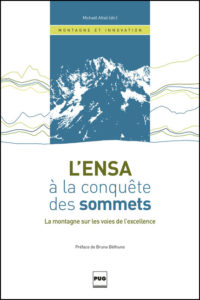 [/su_tooltip]
[/su_tooltip]
ENSA conquers the summits. The mountain on the road to excellence.
Edited by Michaël Attali, Collection Montagne et Innovation, éditions PUG, June 2015.
[su_tooltip title=”Innovation in mountain regions. The challenge of an interdisciplinary approach.” text= “This book examines the question of innovation in mountain areas, through the eyes of scientists from a variety of disciplines: history, geography, law, economics, etc. It presents the state of research in each discipline, and examines the impact of global change on these special areas, which benefit from a particular geography that is both a source and a source of innovation. It presents the state of research by discipline, and questions the impact of global change on these particular territories, benefiting from a particular geography, both a source of profits (tourism, etc.) and a generator of strong planning constraints.” background=”#207c7c” color=”#ffffff” font_size=”14″ max_width=”600″]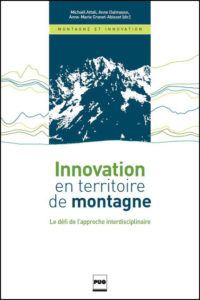 [/su_tooltip]
[/su_tooltip]
Innovation in mountain regions. The challenge of an interdisciplinary approach.
Edited by Michaël Attali, Anne Dalmasso and Anne-Marie Granet-Abisset, Collection Montagne et Innovation, éditions PUG, September 2014.
